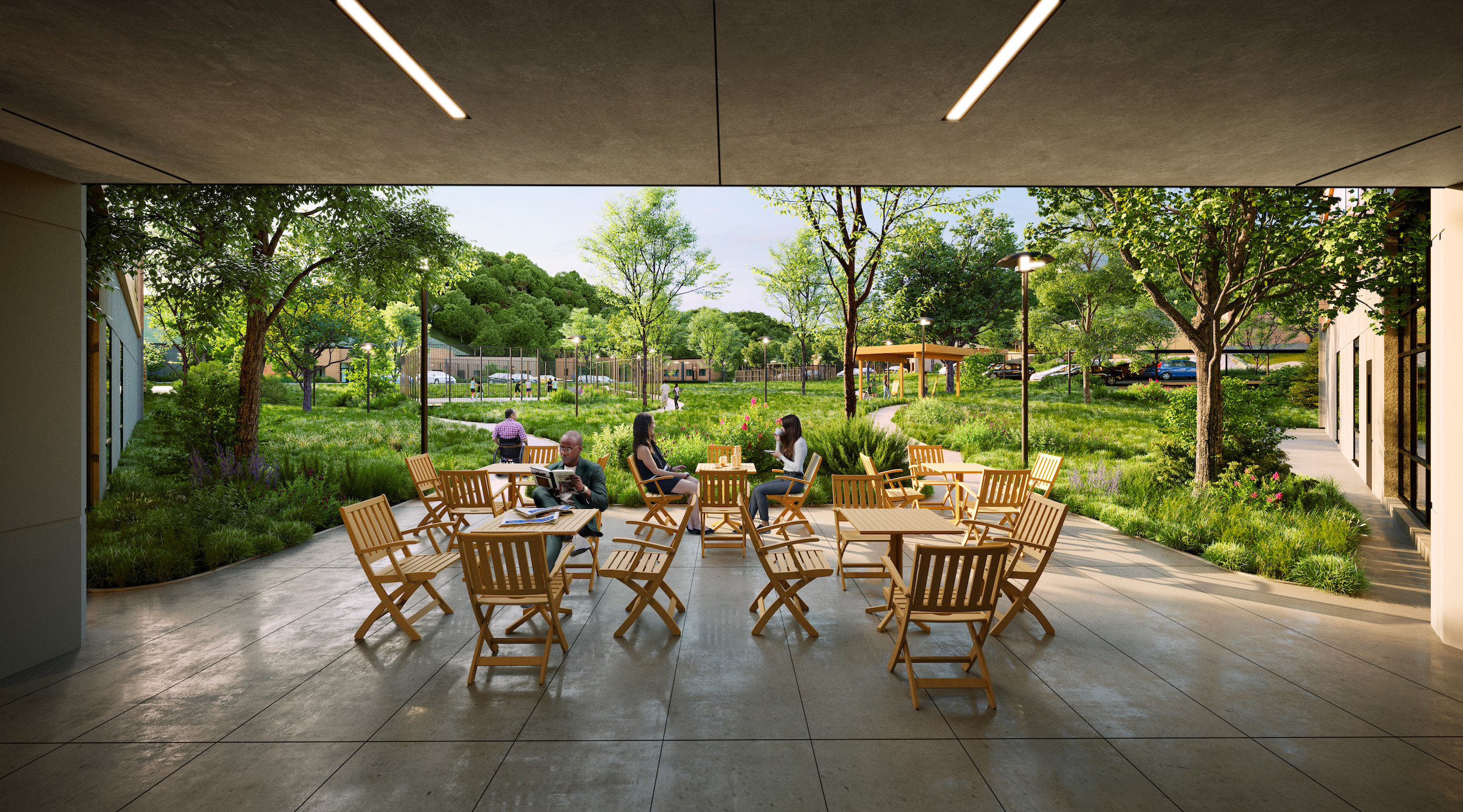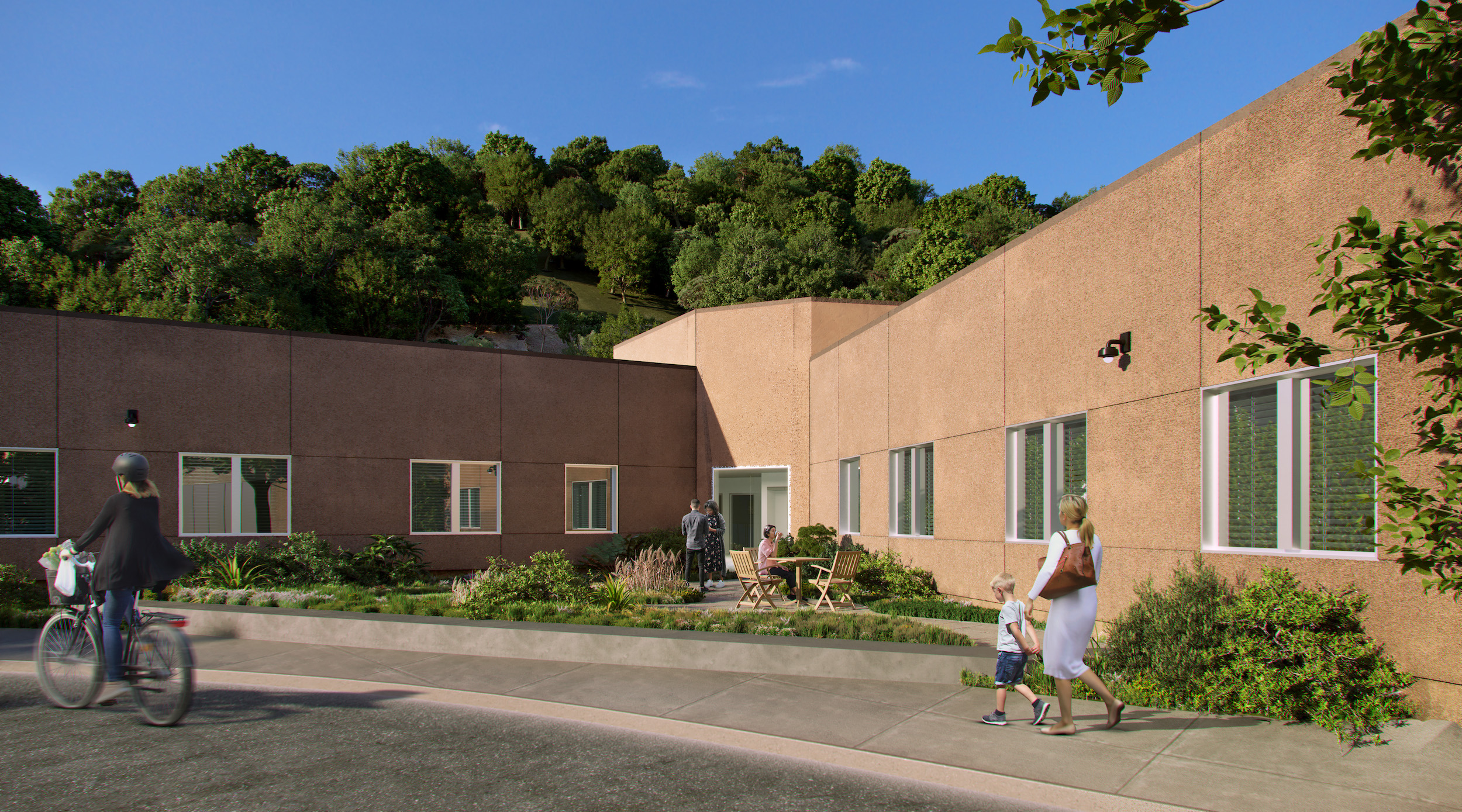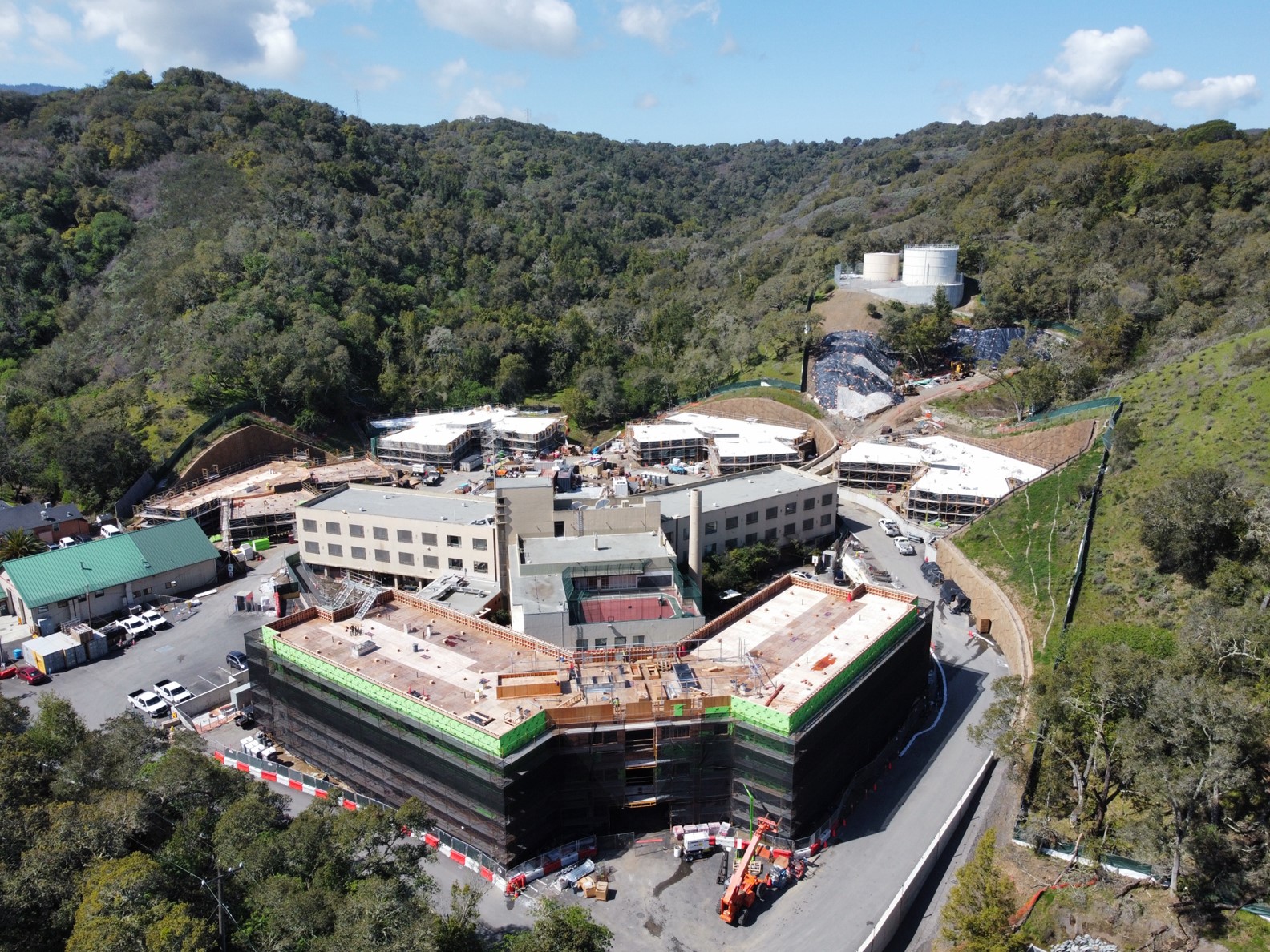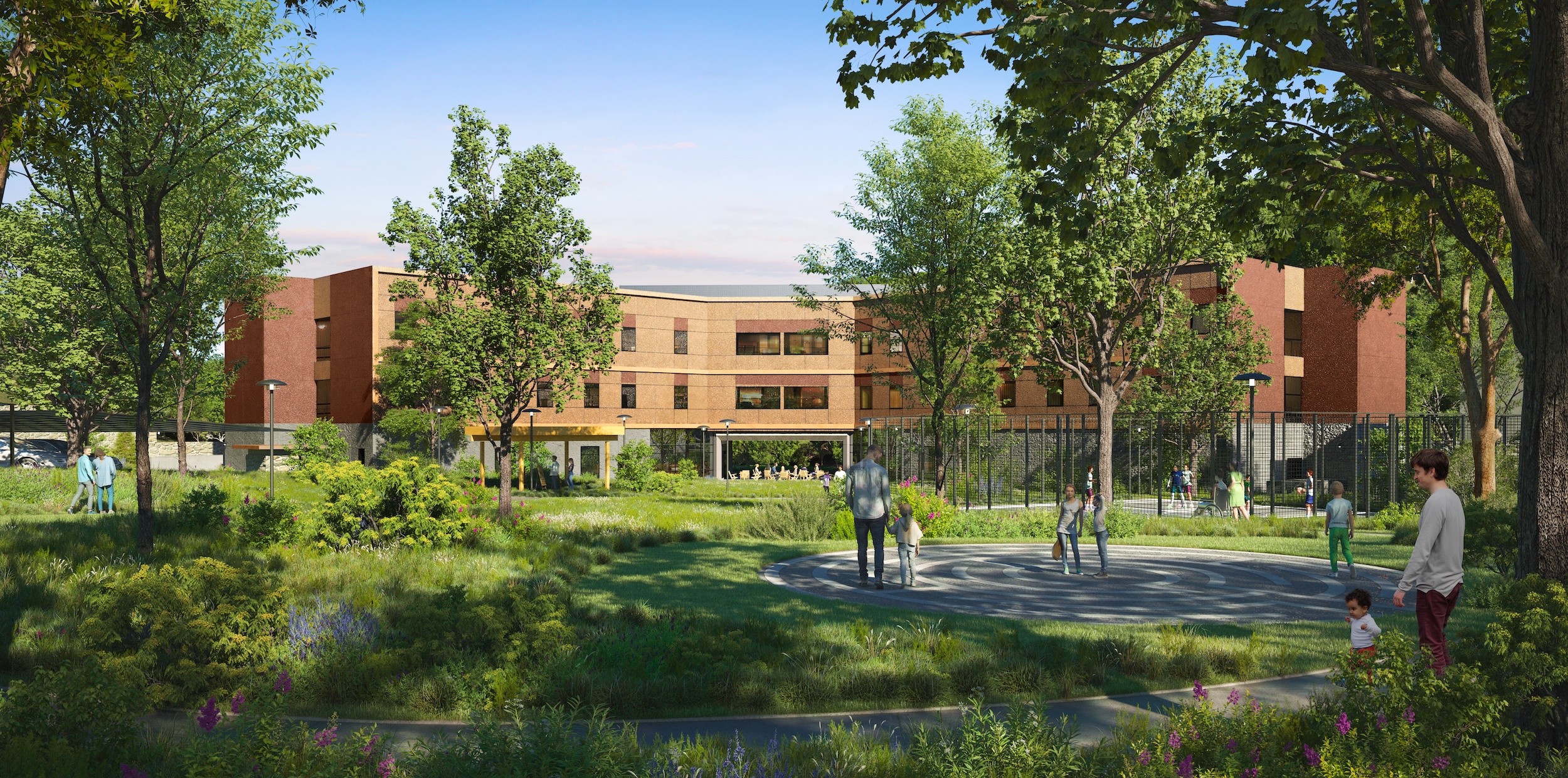Shortly before Mental Health Awareness Month in May, development and construction firm Skanska announced the topping out of California’s first behavioral health facility—and the largest in the nation—to target net zero energy. Located in Redwood City, San Mateo County, Calif., the 77,610-sf Cordilleras Health System Replacement Project is slated for completion in late 2024.
The campus will comprise four single-story mental health rehabilitation centers, each accommodating 16 clients, as well as a three-story co-housing building for 57 residents. With CannonDesign as the design architect, the buildings are arrayed around a central open space with sheltered outdoor seating, community gardens, and recreation areas. Cordilleras also will provide administration, medical, dining, and maintenance services, plus other staff and visitor services.
The project will generate onsite power by installing solar panels on the buildings’ roofs and the parking areas, offsetting the energy usage onsite. Through a design and modeling process, the project team was able to minimize the site’s power usage while maintaining occupant comfort. Cordilleras is targeting a Silver LEED certification and has the potential to achieve Gold.
Located on a wooded hillside south of San Francisco, Cordilleras preserves the existing natural environment and features biophilic design to support therapeutic healing. As a resilient facility, Cordilleras will be able to continue operations in the event of a natural catastrophe.
“More than 51 million Americans—approximately one in five adults—live with mental illness. As healthcare builders and designers, we can directly combat the stigma around seeking care in what was traditionally seen as cold, sterile treatment environments, as we expect to see increased demand for behavioral health facilities,” Lindsay Corotis, vice president/account manager, Skanska USA Building, said in a statement.
The original facility was constructed as a tuberculosis hospital in 1952 and adapted for behavioral health in 1978.
On the Building Team:
Owner: San Mateo County
Design architect and architect of record: CannonDesign
MEP engineer: CannonDesign
Structural engineer: KPFF
Construction: Skanska USA Building



Related Stories
| Aug 11, 2010
Gensler, HOK, HDR among the nation's leading reconstruction design firms, according to BD+C's Giants 300 report
A ranking of the Top 100 Reconstruction Design Firms based on Building Design+Construction's 2009 Giants 300 survey. For more Giants 300 rankings, visit http://www.BDCnetwork.com/Giants
| Aug 11, 2010
RSMeans/RCD forecast 14% drop in hospital construction for 2009
RSMeans forecasts a 14% drop in hospital construction in 2009 compared to 2008, with $17.1 billion in registered hospital projects as of June 30, 2009. The Reed Construction Data unit finds renovation of healthcare facilities increasing, from 36% of projects in 2008, to 40% of projects in the pipeline in the first six months of 2009.
| Aug 11, 2010
ASHRAE introduces building energy label prototype
Most of us know the fuel efficiency of our cars, but what about our buildings? ASHRAE is working to change that, moving one step closer today to introducing its building energy labeling program with release of a prototype label at its 2009 Annual Conference in Louisville, Ky.
| Aug 11, 2010
10 tips for mitigating influenza in buildings
Adopting simple, common-sense measures and proper maintenance protocols can help mitigate the spread of influenza in buildings. In addition, there are system upgrades that can be performed to further mitigate risks. Trane Commercial Systems offers 10 tips to consider during the cold and flu season.
| Aug 11, 2010
McCarthy, Skanska among nation's largest healthcare contractors, according to BD+C's Giants 300 report
A ranking of the Top 50 Healthcare Contractors based on Building Design+Construction's 2009 Giants 300 survey. For more Giants 300 rankings, visit http://www.BDCnetwork.com/Giants
| Aug 11, 2010
AECOM, Arup, Gensler most active in commercial building design, according to BD+C's Giants 300 report
A ranking of the Top 100 Commercial Design Firms based on Building Design+Construction's 2009 Giants 300 survey. For more Giants 300 rankings, visit http://www.BDCnetwork.com/Giants
| Aug 11, 2010
Payette completes Penn State Hershey Cancer Institute
Payette, a leading architectural design firm specializing in complex buildings for medical and scientific research, academic teaching, and healthcare, announced today the Penn State Hershey Cancer Institute ribbon-cutting and dedication ceremony was held on June 26, 2009. The new 176,000 square foot Cancer Institute is located on the Penn State Milton S. Hershey Medical Center Campus in University Park, Pa.







